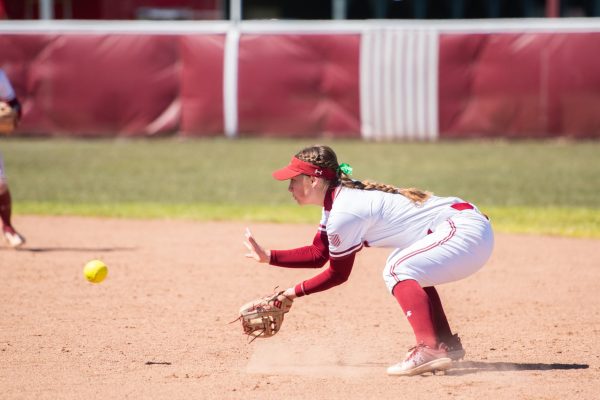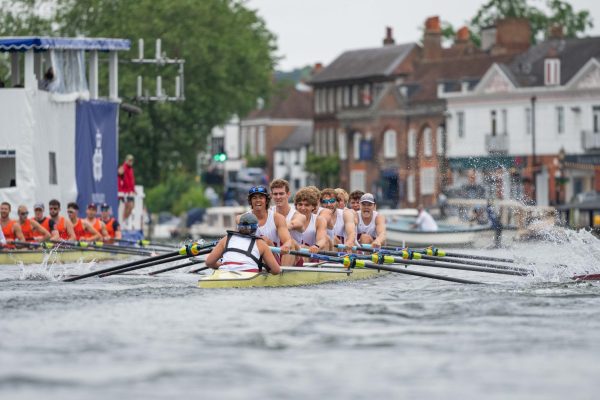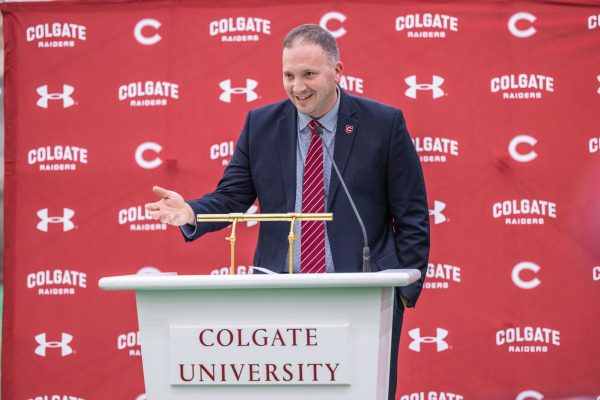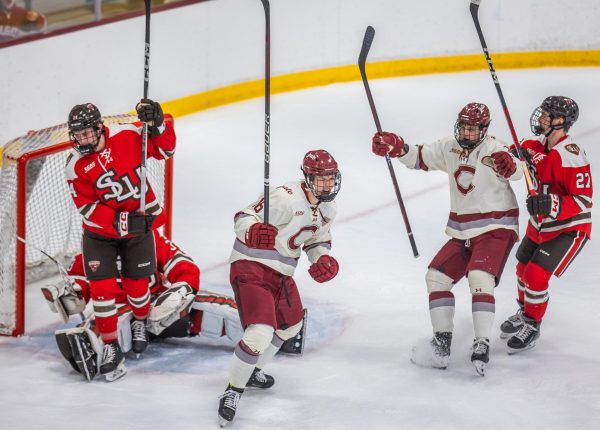My Experience as a Coxswain
In the spring of my freshman year in high school in Wayland, Mass., I was deciding what spring sport I wanted to do. Did I want to continue playing tennis as I had for the last 10 years of my life? Or did I want to try something new?
Deciding to be a part of the rowing team was one of the best decisions I made in high school. For the next three years, my fall and spring seasons would be spent on the water six days a week for two and a half hours. My weekends were occupied by regattas for which I would have to wake up at 3 a.m. and drive to other states.
Rowing truly is a sport like no other. In the best way, it is a sport that everyone loves to hate. Rowers are subject to weight management, back pain, blood blisters and constantly being cold and wet. But at the end of the day, rowing creates such a tight-knit community of dedicated, hard-working people who care deeply for each other that all the pain is worth it.
My first day of practice, I was told I was going to be a coxswain. The coxswain role, fitting for me at 5’0″ tall, is a unique position. Often the question asked is, “Do you just yell at the rowers?” And yes, while being loud and commanding is part of the job, that is one of the smallest aspects of what it is that a coxswain does.
The coxswain, in the simplest terms, is the coach of the boat. We are in charge of steering, encouraging the rowers, giving statistics and information to the rowers during races, carrying out drills during practice and giving technical advice. The coxswain has to be aggressive but also calm, patient, controlled, encouraging and knowledgeable of the sport.
While the coxswain may seem like the worst job, there is nothing quite like the rush of adrenaline that comes with seeing your teammates accomplish their goals during a race, or challenging yourself to take the harder line when steering.
Starting on the novice team, I spent two seasons learning the ins and outs of how to be a coxswain with very little instruction. The next three seasons I spent on the “worst” boats on the varsity team, looking up to the two older coxswains and learning everything that I could. Since there are no coxswain coaches, I had a lot of learning to do and definitely was blamed for almost everything that went wrong, forcing me to learn very quickly what was going on.
Those three brutal seasons were made worth it when I was placed in the top varsity boat my senior year. In the fall, the races are much longer, with a distance of 5000 meters. In the spring, sprint races are only 2000 meters.
Head of the Charles, one of the most internationally famous races which takes place on the Charles River in Cambridge, Mass., is a notoriously difficult course for which I prepared for weeks. Three different times I went on the course with different coaches to learn the best line and how to steer the fastest course. This race is truly a coxswain’s race, as an inadequate coxswain performance can add hundreds of meters to the race and slow down the team tremendously.
My team raced in the Women’s Junior 8+ category with around 80 other boats. Each boat has a staggered start, but boats can overtake each other based on how fast they are and how good their coxswain’s steering is. Our team’s goal was to place in the top half of the field in order to get a spot in next year’s race. We also wanted to beat our place from last year of 38th. All the hard work paid off and, after steering an admittedly pretty perfect line, we placed 25th, the best place in our team’s history.
Another monumental moment in our team’s history was the Youth National Championship in the spring of 2018 at Lake Natoma in Sacramento, Calif. It was my senior spring and by some miracle, I had coxed two boats to the National Championship, a 4+ and an 8+. For the last three years, the 4+ had made it to nationals but had fallen short of winning, usually by the hand of the coxswain. Two of the four rowers in the boat had experienced this themselves. That week, I showed a culmination of all the skills I had learned in how to keep the rowers calm, cool and collected in the face of an immense amount of pressure.
It was another perfect day by the time we had made it through the qualifying and semi-final rounds. The water was still and serene, the sun was shining and the adrenaline was building as we sat on the starting line. The horn went off and it was a mad dash to get off the line first. We quickly pulled away and were neck in neck with the team that we had finished second to in regionals. For 1000 meters, all I could think about was getting this boat across the finish line first at any cost. There was no technical advice, no statistics said or calm energy.
It was pure adrenaline and encouragement. When we did cross that finish line first, it was one of the best feelings in the world. These girls, who had worked so hard for the last three years, had finally accomplished their ultimate goal, and for the first time in my team’s history we won the championship. It was the best ending to my high school career that I could have asked for.










